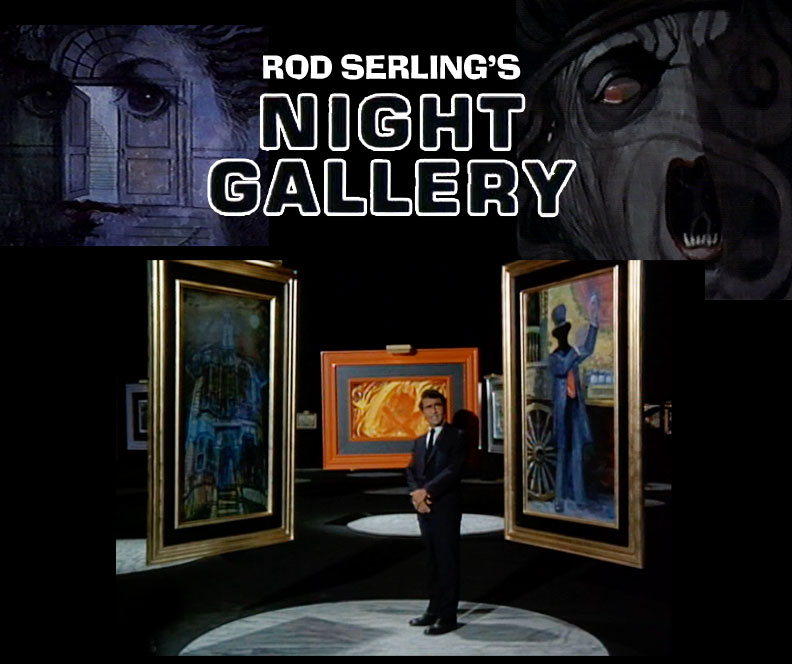It was hip. It was creepy.
The return of Rod Serling to the television screen in the seventies was a most welcome event. Night Gallery felt like more of an extension of The Twilight zone even though it really wasn't. Serling himself didn't have the control that he had over the Twilight zone as he had in the '60s, and as a result, the series was suffered for it. Twilight zone in the '60s, focused more on science fiction and fantasy whereas night gallery in the '70s focused more on dark fantasy and tales of the supernatural. However rod serling's return as an anthology host was still truly wonderful.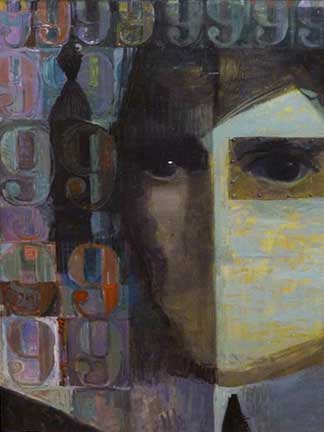
The unveiling of the paintings that introduced each episode was a fascinating aspect in the opening of the show. It was almost as if the paintings were the true stars of the show, and we couldn't wait for the camera to zoom in on them. Each Night Gallery canvas was painted by artists Tom Wright and Jaroslav "Jerry" Gebr. The series credits for the paintings went to Tom Wright.
They were beautiful and thought provoking. In a dark hallway, various overhead spotlights shone down on the darkened canvases which led us to a level of anticipation that kicked off each episode. In short, Night gallery was a welcome return to the horror and mystery anthology genre.
As for critical reception, the show was not as popular among viewers as the producers had hoped. This was a program that some liked, others hated, but I loved it. It was Serling back in the saddle, hosting yet another potpourri of chilling tales designed to curdle the senses and delight the imagination. And preceding each tale was a private showing; an unveiling of a painting darker than the theme it represented. Each work was specific; beautiful yet dreadful, bizarre yet disturbingly normal; colorful yet drab, but above all, each was delightfully crafted. This was "The Night Gallery".
Welcome, art lovers.
We offer for your approval..."
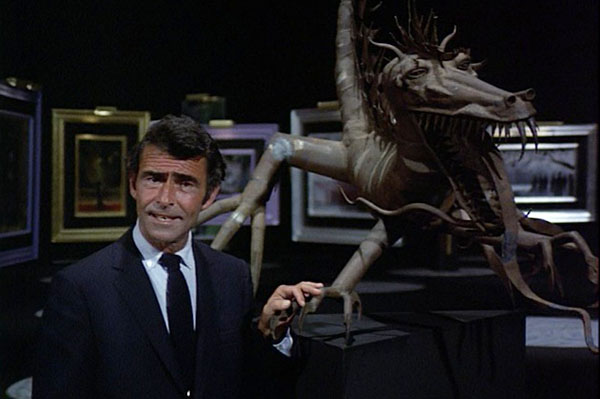 From a distance we heard the soft echo of heels clicking along a private showroom floor. The gentle cadence of our host emerging from the shadow of a blackened canvas is enough to hook a viewer immediately. This place, this darkened gallery, is lit solely by soft floods that bathe the room in a meager, yet sufficient enough light to view certain canvases. In this ambiance, he welcomes us to a special showing in a gallery off the beaten path.
From a distance we heard the soft echo of heels clicking along a private showroom floor. The gentle cadence of our host emerging from the shadow of a blackened canvas is enough to hook a viewer immediately. This place, this darkened gallery, is lit solely by soft floods that bathe the room in a meager, yet sufficient enough light to view certain canvases. In this ambiance, he welcomes us to a special showing in a gallery off the beaten path.
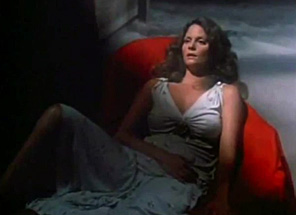 Tastefully and subtly photographed in Rembrandt light, Rod Serling once again graced prime time television screens with the sardonic smile and coiffed dialogue that has leveled him to the status of American icon. "Night Gallery" was an ingenious concept even if it lacked the true finishing touches to make it a perfect series. Everyone has their favorite style. Myself, I would have preferred them to leave the comedies out altogether. Let's face it, comedy has no place in the dark.
Tastefully and subtly photographed in Rembrandt light, Rod Serling once again graced prime time television screens with the sardonic smile and coiffed dialogue that has leveled him to the status of American icon. "Night Gallery" was an ingenious concept even if it lacked the true finishing touches to make it a perfect series. Everyone has their favorite style. Myself, I would have preferred them to leave the comedies out altogether. Let's face it, comedy has no place in the dark.
Since The Outer Limits, there was probably no other TV program as important to me as Rod Serling's Night Gallery. It was an anthology horror program introduced from inside the vault of a private "gallery". I lived for this program and remember some of the most memorable characters and plots of all time. Though later, I recognized the plots as some that I'd seen on Twilight Zone episodes, only rearranged a bit. In an era of mood, color, black lights and psychedelia, "Night Gallery" seemed right at home.
Further down the road, around 1974, the show went into syndication and came on at 7:30 every evening on channel 12. I think I enjoyed it even more then. It was shown in half-hour blocks. I worked in a sheet metal shop at the time, and recall how great it was to come home and smoke a joint while sitting in the dark watching one of the guys who ruled the 60's.
Anatomy of an Anthology
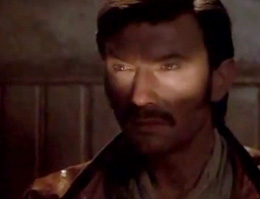 There is a certain recipe for concocting an anthology program of this caliber. However, very few have been as successful as Rod Serling. Wherever Rod walks, style follows. As with the Twilight Zone, Rod gives us a dramatic opening daubed with dark sarcasm on society and future forecasts thereof.
There is a certain recipe for concocting an anthology program of this caliber. However, very few have been as successful as Rod Serling. Wherever Rod walks, style follows. As with the Twilight Zone, Rod gives us a dramatic opening daubed with dark sarcasm on society and future forecasts thereof.
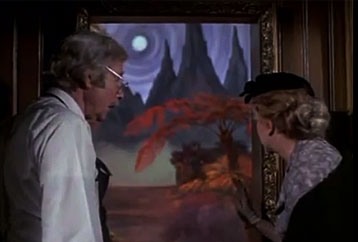 He smiles and appears to us a pleasant and charming gentleman who's mocking the very presentation he introduces. He does this simply by sizing up character, plot, and blending them together with the weakness of humankind. The openings were tainted, yet teasing, and we couldn't wait to get to the show. His dialogues were razor sharp, and to this day, I have never seen or heard anything as perfect . As Rod himself could have written "a tale with a twist of lemon and a pinch of arsenic."
He smiles and appears to us a pleasant and charming gentleman who's mocking the very presentation he introduces. He does this simply by sizing up character, plot, and blending them together with the weakness of humankind. The openings were tainted, yet teasing, and we couldn't wait to get to the show. His dialogues were razor sharp, and to this day, I have never seen or heard anything as perfect . As Rod himself could have written "a tale with a twist of lemon and a pinch of arsenic."
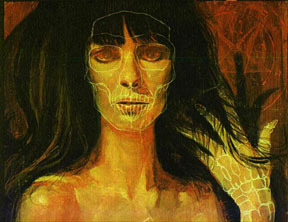 The color of it all, the set designs, the paintings, even the flavor of the scripts were just wonderful. My only complaint was that his opening monologues-though supreme, were often repeated on many occasions for several episodes. It would have been nice to have a unique introduction to each episode, but overall, that's a minor complaint. Anthology programs like Alfred Hitchcock Presents, Thriller (with Boris Karloff), and One Step Beyond were likewise stylish and had their own opening techniques. Though Alfred Hitchcock did have his opening and closing skits, they were always comedy, which to some was entertaining, but for me, it stole from the show we were about to see.
The color of it all, the set designs, the paintings, even the flavor of the scripts were just wonderful. My only complaint was that his opening monologues-though supreme, were often repeated on many occasions for several episodes. It would have been nice to have a unique introduction to each episode, but overall, that's a minor complaint. Anthology programs like Alfred Hitchcock Presents, Thriller (with Boris Karloff), and One Step Beyond were likewise stylish and had their own opening techniques. Though Alfred Hitchcock did have his opening and closing skits, they were always comedy, which to some was entertaining, but for me, it stole from the show we were about to see.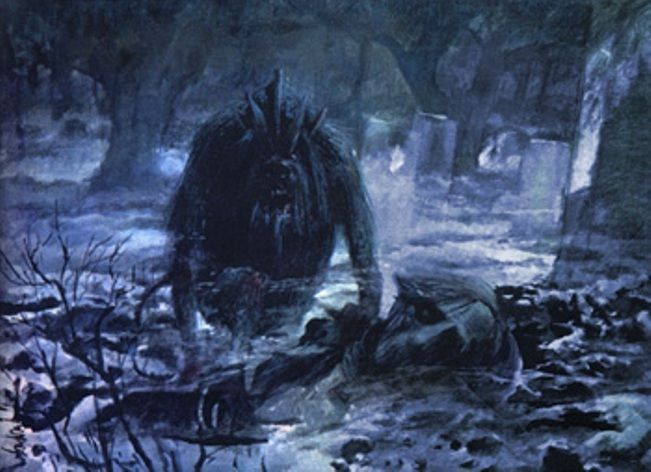
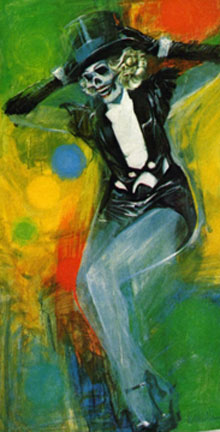 What I enjoyed most about the show was Serling's scripts and story adaptations from famous authors. Night Gallery thrilled us weekly by presenting to us horrors we normally took for granted, or newer, more ingenious ways of entertaining us with horrors we hadn't yet thought of.
What I enjoyed most about the show was Serling's scripts and story adaptations from famous authors. Night Gallery thrilled us weekly by presenting to us horrors we normally took for granted, or newer, more ingenious ways of entertaining us with horrors we hadn't yet thought of.
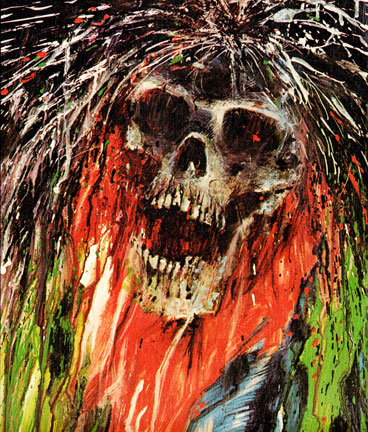 "The Doll", a tale of a hideous looking doll that seems to stare right at us with a most threatening gaze. Better yet, how about a seemingly harmless caterpillar? This little devil is not a caterpillar, but an earwig that burrows deep into a man's ear. It left me horrified beyond compare the very first time I saw it.
"The Doll", a tale of a hideous looking doll that seems to stare right at us with a most threatening gaze. Better yet, how about a seemingly harmless caterpillar? This little devil is not a caterpillar, but an earwig that burrows deep into a man's ear. It left me horrified beyond compare the very first time I saw it.
Other aspects to "Night Gallery" that so attracted me then, were the paintings. They were wonderfully chilling, sinister, otherworldly, at times lonesome, and altogether haunting. The generous use of blues and grays and blacks, complimented by occasional splashes of vibrance were a testimonial to the show's strange atmosphere.
H.P. Lovecraft's tale of "Pickman's Model" was another standout episode. Though the ghouls' makeup was cheesy, it was still fun and the episode was just loaded with flavor. The dish of revenge that was best served cold was served up delightfully well in "Camera Obscura" and "The Other Way Out." Of note, both of these episodes starred Ross Martin.
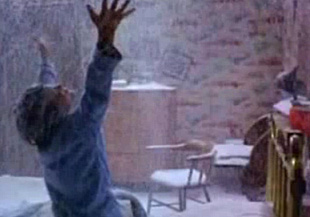 One of my favorites in odd fantasy categories, was "Silent Snow, Secret Snow" utilizing gorgeous winter nature photography and the magic of Orson Welles' voice. This episode was a poem played out on prime time television about one boy's fantasy obsession with snow.
One of my favorites in odd fantasy categories, was "Silent Snow, Secret Snow" utilizing gorgeous winter nature photography and the magic of Orson Welles' voice. This episode was a poem played out on prime time television about one boy's fantasy obsession with snow.
Continuing with the rare, but elegiac episodes that touched the heart was "Cool Air". A lamenting narrative accompanied by gentle flamenco guitar told the romantic tale of a woman and the prolonged corpse who stole her heart.
The romance of the old west was creepy and haunting in the foreboding episode "The Waiting Room" where certain baddies get to wait out their fates for eternity. When it came to Night Gallery Sci-Fi, the stories were so typically 70's, and presented on a budget. "The Different Ones" was a two-part ripoff: One was of an earlier Twilight Zone episode "The Eye of the Beholder". The second was actual footage stolen from the movie "Silent Running".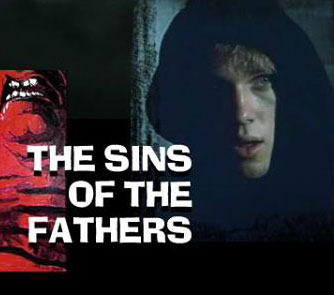 Returning from the dead to get even was another popular NG theme. Exemplary episodes would be "The Ghost of Sorworth Place", "Green Fingers", and the pilot episode "The Cemetery." Though Night Gallery was a program that focused on the macabre and darker side of things unknown, it dabbled in previous Twilight Zone territory.
Returning from the dead to get even was another popular NG theme. Exemplary episodes would be "The Ghost of Sorworth Place", "Green Fingers", and the pilot episode "The Cemetery." Though Night Gallery was a program that focused on the macabre and darker side of things unknown, it dabbled in previous Twilight Zone territory.
Doom and gloom also came with the predictions of a young boy who saw the beauty of life, and the end of it in And if revenge is a dish best served cold, beware of gifts from strangers:"A Feast of Blood" is a true classic.
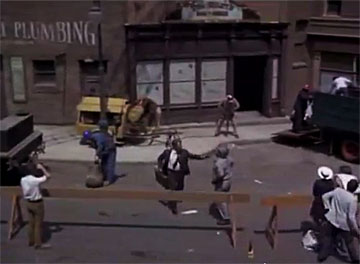 The theme of going home again was portrayed extremely well in the Emmy Award winning episode "They're Tearing Down Tim Riley's Bar". This is probably one of the finest episodes on this theme I've ever seen.
The theme of going home again was portrayed extremely well in the Emmy Award winning episode "They're Tearing Down Tim Riley's Bar". This is probably one of the finest episodes on this theme I've ever seen.
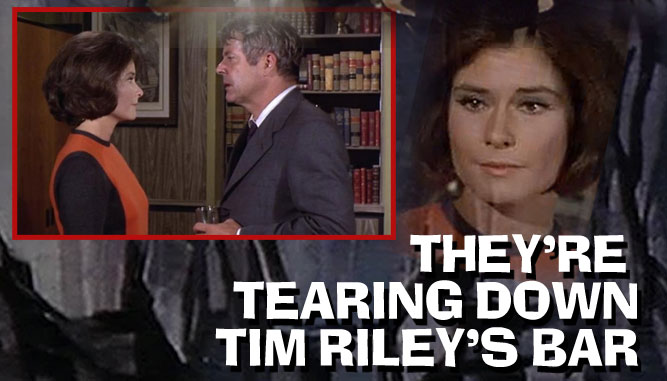
This episode was beautifully acted by William Windom. "They're Tearing Down Tim Riley's Bar" was one of those episodes that provided that desperate sense that some of us feel, or have felt. The need or desire to escape the stress of the now and return to the "then" was brilliantly played.

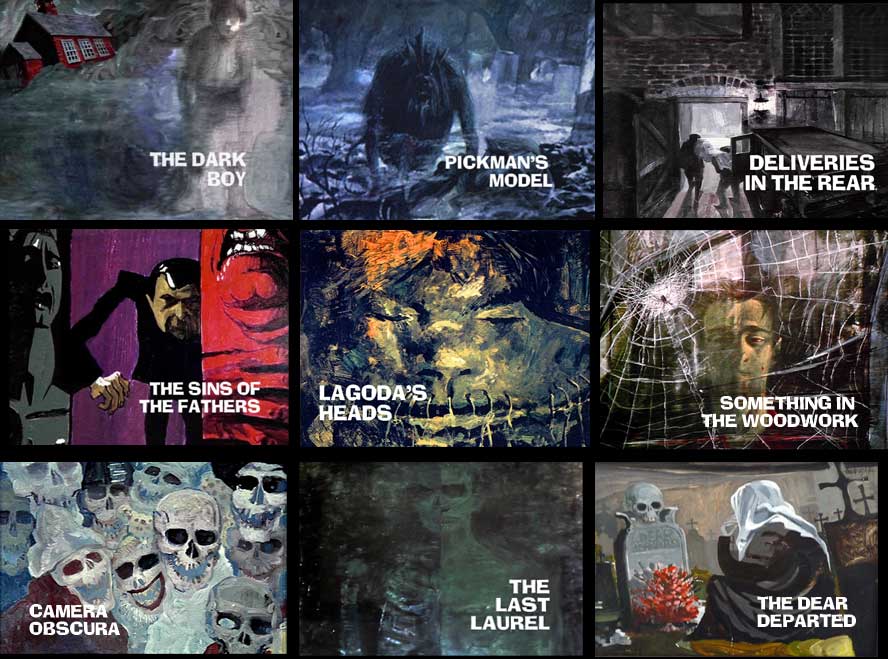
- "The Doll"
- "The Caterpillar"
- "The Sins of the Fathers"
- "The Dark Boy"
- "The Waiting Room"
- "Cool Air"
- "Pickman's Model"
- "The Different Ones"
- "A Feast of Blood"
- "Brenda"
- "The Little Black Bag"
- "Keep in Touch, We'll Think of Something"
- "The Boy Who Predicted Earthquakes"
- "Fright Night"
- "A Question of Fear"
- "I'll Never Leave You Ever"
- "The Ghost of Sorworth Place"
- "Deliveries in the Rear"
- "Rare Objects"
- "The Ring with the Red Velvet Ropes"
- "Death on a Barge"

